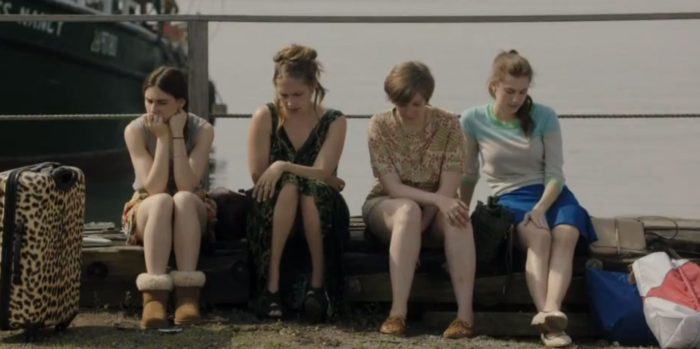
It was the first inFAMOUS game that sold me on the PS3. Uncharted made it tempting, but the idea of an open world super hero game is one that I can’t resist – why else would I have spent so much time with the PS2-era Spider-Man games? So in retrospect, maybe it’s not a surprise that I became an early adopter of the PlayStation 4 basically so I could get the third inFAMOUS game. Especially since this entry was abandoning the franchise’s tradition of using stand in cities (“Empire City” in the first game was basically New York, “New Marais” was essentially Now Orleans) and was actually set in Seattle, a place I have considerable fondness for. It’s not the Nineties anymore, we don’t get a lot of stuff set over here!
Actually I ended up wishing they hadn’t actually called this city Seattle, because it’s not quite close enough for me. Some parts of the city feel really abridged – like how the Space Needle is basically in the Science Center – while others feel fairly alien, like the “Lantern District,” which didn’t really remind me of the International District at all. There are great touches here and there (I was particularly happy to find the Toe Truck and Elephant Car Wash) but it never felt exactly like Seattle. Especially since inFAMOUS: Second Son‘s set in the future and years after super powered conduits first appeared and starting wrecking places, I’m not sure this could have really been Seattle anyway. I did appreciate the 12th Man jersey I unlocked for my character though.
Delsin Rowe steps in as the series’ new protagonist, since it would be weird for Cole to come back given the way the second game ended. Since then, a government organization called the DUP was formed to capture and intern conduits. A trio of conduits escape from a DUP transport and accidentally reveal that Delsin is a conduit too – one with the unique ability to copy powers from others. With his first power in hand, Delsin and his cop brother head off to Seattle to find the conduits and stop the DUP from doing some nefarious shit.
inFAMOUS: Second Son takes the series already fairly black-and-white approach to moral dilemmas to even simpler heights. While a case could be made for the pivotal choices in the first two games, here I have no doubt that the “good” choice will be considered canon. Basically you chose between being a reasonable person and a terrible monster. Which is a shame, given the game’s early aspirations to deal with complex prejudices and the nanny state. You won’t find yourself torn between loyalties, humans vs. conduits, any of that stuff. Straight up it will be like “do you want to kill the bad guy or kill a bunch of innocent people for no reason?” But that’s OK since you the real incentive to choose bad karma is still there: sweet, sweet evil versions of your powers.
Between story missions, you can work at liberating districts of Seattle. You’ll want to do this, since it nets you blast shards, the currency you use for upgrading powers. Most powers in the game have upgrades, and some require you have a certain amount of good or evil karma. Generally, good karma powers make you better at disabling and detaining enemies, while evil karma increases your destructive potential. So a good karma player will upgrade one blast to be able to zoom in on enemies and shoot them in the feet to disable them, while an evil karma player will unlock the ability to make people dissolve when shot in the head. Karma even extends into combat, with good or evil actions giving you the power to do massive attacks that wipe out all the enemies in an area.
This is the best power fantasy this side of Saints Row IV. Each of the powers Delsin gets feels and looks different from the last, and none of them are exactly like Cole’s lightning powers. Gone are the days of skating on powerlines, now you can, for example, turn into a puff of smoke and get sucked through vents, blasting you to the tops of buildings. Despite whatever other reservations I had, this game just feels great to play. It helps that it’s one of the prettiest games around too, making it a great showcase for this sweet new console I’ve totally had for three months already.
It took me maybe a dozen hours to beat inFAMOUS: Second Son the first time, which isn’t a lot of an open world game. But this game does not match the last games’ enemy and side quest variety, so I’m OK with it. There are only a few side quest types, and most of them only take a minute or so to complete. Basically, I felt I was given enough time to really enjoy each power without overstaying its welcome. Plus, I kind of want to play it again with good karma, because what I’ve seen of that so far makes Delsin seem like a way better person.
After the disappointments of Knack and Killzone: Shadow Fall, as well as the delay of DriveClub, PS4 owners have been looking for a win. inFAMOUS: Second Son is the first game on the system I would say is good enough to motivate a console purchase – if you’re into the series or super hero games in general. It’s kind of shallow to say, but this game’s gorgeous and fun, and when you’re in the early days of a system, that’s about anyone’s looking for.











